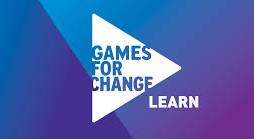It's often easy to take the nation's education debates at face value, but truly understanding them requires a familiarity with a wide array of evidence and data. More often than not, the stats in the reports and studies behind state and national conversations speak better than opinion pieces on why a particular method or policy is great.
In 2014, a slew of studies tackled topics ranging from the school-to-prison pipeline to the arts' decreasing presence in schools. To help minimize the clutter, we've rounded up 10 of the most interesting.
1. Number of homeless students hits all-time high
One in 30 school-age children in the U.S. is homeless, according to "America's Youngest Outcasts," a new study issued in November by the National Center on Family Homelessness. According to the report, the United States' high poverty rate, a lack of affordable housing, and the effects of domestic violence are to blame for the nation's surging child homelessness rates. This news is even sadder when coupled with 2014's "Don't Call Them Dropouts" from Tufts University's Center for Promise, which found that homeless students are 87% more likely to stop going to school. Studies like this make it clear that school choice is not the only way to fix education problems — identifying solutions for poverty must be considered, as well.
2. African-American girls disproportionately penalized in school
A September report from the NAACP Legal Defense and Educational Fund and the National Women's Law Center found that African-American girls are more likely to be held back, suspended, or expelled than any other female demographic. To blame: gender and racial stereotypes, disparities in resource distribution, and zero-tolerance punishment systems. To help fight the problem, the report suggested investing in early childhood education, eliminating zero-tolerance punishment, and increasing research compiled by race and gender.
3. Pre-K should be structured like K-12
The non-partisan New America Foundation published a report in July with policy suggestions for pre-K learning, specifically recommending that pre-K programs look more like the rest of K-12 in terms of funding, school hours, and the expectations of the educator's role. The report was a follow-up to a winter analysis on early education that highlighted the discrepancy between the high enthusiasm for pre-K and the low access to it.
4. Lack of arts in NYC public schools
In April, New York City Comptroller Scott Stringer released a report detailing quantifiable stats on the decreasing number of New York public schools offering arts education, with low-income neighborhoods most affected by the cuts. According to the report, 20% of the city's public schools lack any type of arts teachers and, more specifically, 42% of schools without certified arts teachers are clustered in South Bronx and Central Brooklyn. Stringer said supplying a full-time, certified arts teacher to every school that doesn’t have one would cost about $26 million.
On a national level, the report highlights a massive issue when it comes to economic disparities between districts. Low-income neighborhoods don’t lack arts programs because they care about the arts less than wealthier districts — they lack them because, when budgets are tight, those programs are unfortunately the first to go.
5. 16% of urban teachers 'chronically absent'
A June report from the National Council on Teacher Quality found that 16% of teachers who work in the nation's 40 largest school districts were absent for at least 18 days of the school year, a number that could be considered "chronically absent." The report also found that the average number of days missed by urban teachers, big or small districts included, was about 11. A third of absences in these urban schools were caused by "chronically absent" teachers. Obviously, this does not bode well for students, who are then shuffled between substitute teachers, lacking the stable environment that is key to success in any school.
6. Bias found in teacher evals
The Brookings Institution's Brown Center on Education Policy analyzed four urban school districts as they attempted to create meaningful teacher evaluation systems using both observation and student academic gains. The May report stated that teachers have difficulty receiving top scores if they don't already have high-performing students, that observations by outsiders are more reliable than those by school administrators, that district size unfairly impacts a teacher's "student gain" scores, and that using academic gains to calculate "value added" by a teacher hurts good teachers in bad schools and vice-versa. Brookings made a number of suggestions for states attempting to implement evaluations, including adjusting teacher observation scores based on the demographic they are serving, having at least one observation each year performed by a trained outsider, and eliminating the value-added method (VAM) of teacher evaluation.
7. California's economy rests on the education of immigrant youth
"Critical Choices in Post-Recession California," a report by the Migration Policy Institute, urged state lawmakers to strengthen educational opportunities for immigrant populations. Nearly a quarter of the nation's immigrants call California home. The study says the economic prosperity of California, and the rest of the nation, relies on the educational attainment of young immigrants and encourages state leaders to take advantage of recent reforms and the recovering economy to improve education opportunities that may have been scrapped due to lower funds.
8. Taxpayers lost $100M to charter school fraud and waste
The Center for Popular Democracy and Integrity in Education teamed up in May to release a study detailing ways in which charter schools are susceptible to waste, fraud, and mismanagement "totaling over $100 million in losses to taxpayers." The report zeroed in on six different types of abuses of power and waste within charters, giving specific examples from 15 of the 42 states with schools used in their study. While the report gave detailed accounts of how money has been mismanaged, it also conceded that the lack of transparency and accountability means “the fraud and mismanagement that has been uncovered thus far might be just the tip of the iceberg.” The most prevalent type of mismanagement uncovered? The use of public funds for personal gain by charter operators.
9. 'Colorblind' ed reform policies miss the bigger issues
"Seeing Past the ‘Colorblind’ Myth of Education Policy,” a report from Columbia University’s Teacher’s College, published by the National Education Policy Center, argues that the housing market, school district boundaries, and accountability systems are, by nature, not equal or colorblind. By default, that means schools are not equal, either. The report specifically looks at the accountability movement and school choice policies as examples, where “colorblind” education reforms aimed at decreasing the achievement gap can actually exacerbate the gap by not fully acknowledging the role race plays in the U.S. educational system.
10. Juvenile inmates receive substandard education
The Southern Education Foundation found in April that student inmates in the juvenile justice system generally receive substandard education, even though learning could give them a better future or reduce the likelihood of recurring offenses. The study used 2009 U.S. Department of Education data that reported students enrolled in the juvenile justice education system for over 90 days "failed to make any significant improvement in learning and academic achievement," and that less than half of the high school-aged students earned at least one course credit during their time attending state juvenile justice schools.
The report's author, Steve Suitts, told the Huffington Post that a major factor making it difficult to understand and know how students in juvenile systems are being educated is the fact that they are not subject to standardized tests like the rest of the nation. For this reason, the report recommends the juvenile justice system be subject to state standards and collect more data on the students' needs and progress.
Would you like to see more education news like this in your inbox on a daily basis? Subscribe to our Education Dive email newsletter! You may also want to read Education Dive's look at 5 K-12 stories to watch in 2015.



















